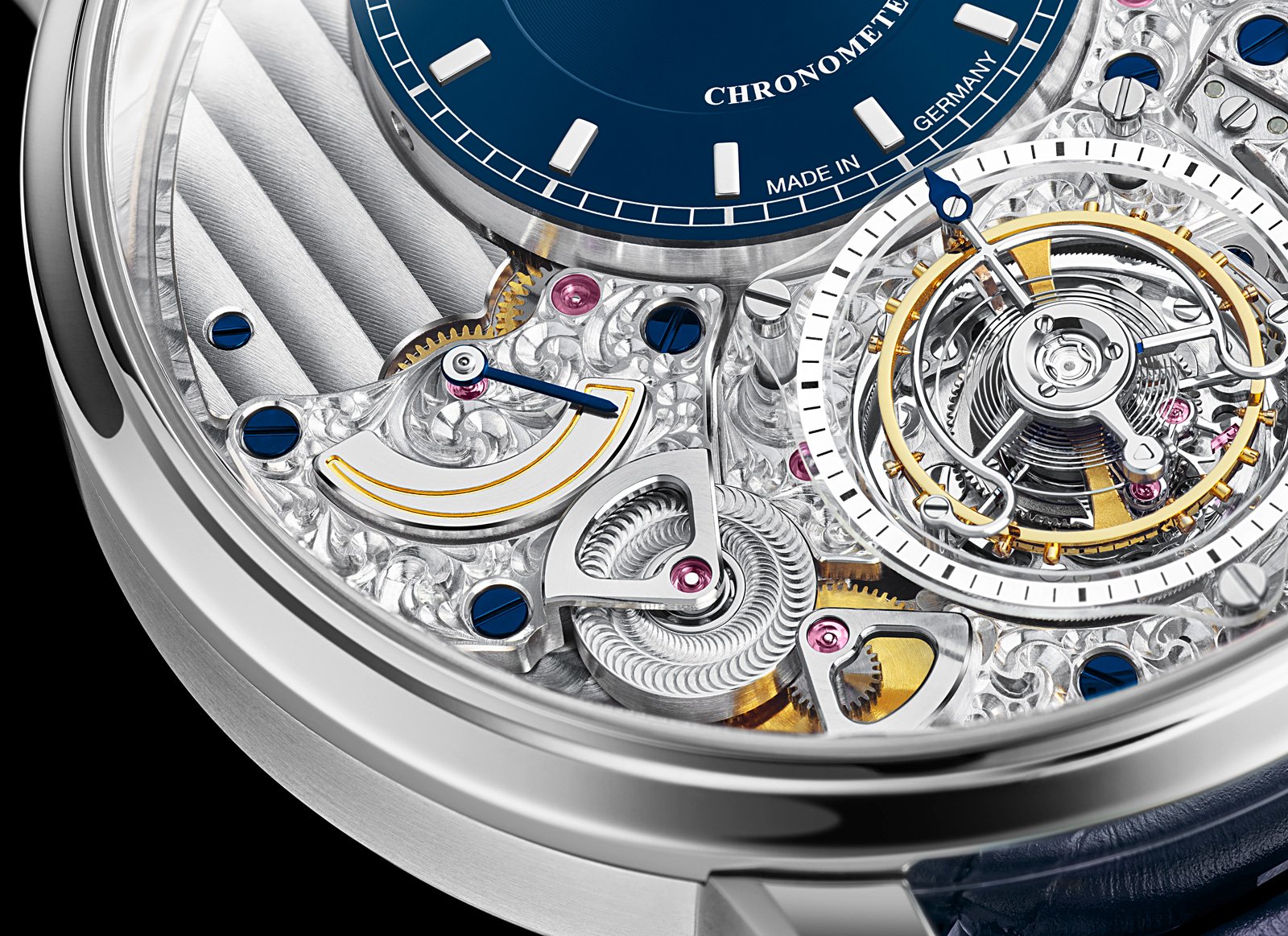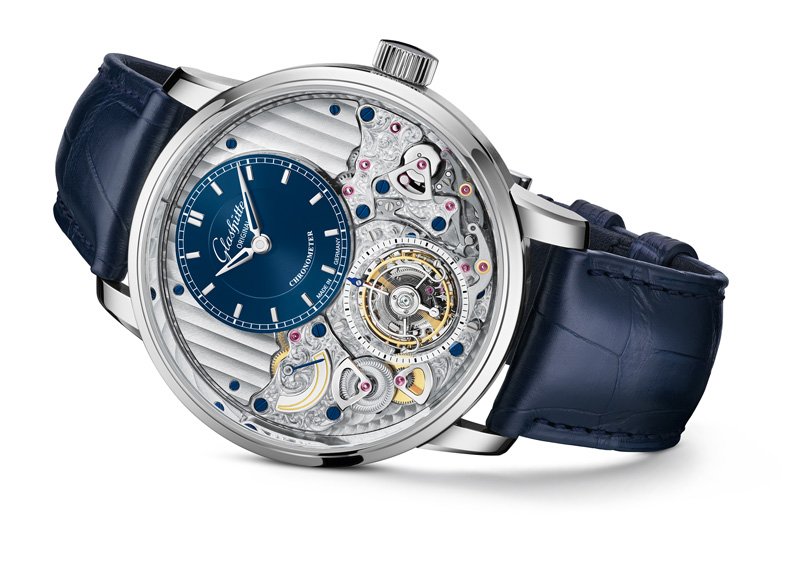he origins of the German “Vallée de Joux”, Glashütte, date back to 1845, when the first watchmakers, including Ferdinand Adolph Lange, settled in the small mining town to create a German watchmaking industry with high standards of production (read our report on the area by clicking here). From that date, workshops began to proliferate there.
But unlike peaceful Switzerland, Germany’s turbulent history repeatedly interrupted the rise of the Glashütte watchmaking valley and changed its destiny.
The origins of the very name “Glashütte Original” reflect this. It was in 1916 that the first clock by a watchmaker named Karl W. Höhnel was signed “Original Glashütte”. In November 1918, the company Deutsche Präzisions-Uhrenfabrik Glashütte (Sa.) was registered. It wanted the place of origin of its products to be part of its name, including it on its pocket watches from 1921, “in order to show that this product is genuine and not a foreign imitation”.
The UROFA and the UFAG followed on the Deutsche Präzisions-Uhrenfabrik Glashütte (Sa.) after the latter was closed in the year 1925. The UROFA was responsible for the production of the raw movements and components and the UFAG finished and assembled the watches. This was the first time that watches with a dial bearing the name Glashütte Original had appeared.
-

- Excerpt from the Journal Suisse d’Horlogerie in 1921.
During the same period, master watchmaker Alfred Helwig, based in Glashütte, invented a new type of tourbillon, fixed on one side only, now known as the “flying tourbillon”. The invention gave the tourbillon a new lightness and transparency. It also demonstrated Glashütte’s watchmaking, scientific and technical excellence.
-

- Alfred Helwig’s flying tourbillon, a demonstration model from 1927. This innovation would strongly influence the fate of Glashütte Original to this day.
At the end of the Second World War, the territory of Glashütte and Dresden, the nearest major city, passed over to East Germany. The communist authorities had a different vision of watchmaking.
The various independent workshops were grouped into a single entity, the VEB Glashütter Uhrenbetriebe (GUB), oriented towards mass production (some of those products, particularly in the 1960s and 1970s, are interesting in their own right, as we can read below).
In 1989, before the Wall fell, there were still over 2.000 people in the company. Due to economic changes, however, this number decreased in the following years. In 1994, the company was privatized. At this pointed, it counted 72 employees.
Heinz W. Pfeifer, then Nicolas Hayek
In 1994, Heinz W. Pfeifer bought the premises and machines and relaunched production under the name Glashütte Original, with the ambition of bringing all design and production operations under one roof. Within a few years, Glashütte Original had regained its lost prestige.
-

- The “rebirth” of Helwig’s flying tourbillon happened as soon as Glashütte Original was restarted, as shown in this image published in Europa Star 4/1996.
- © Europa Star Archives
In 2000, Nicolas Hayek decided to focus on the brand (partly in response to Richemont’s acquisition of A. Lange & Söhne, which was relaunched in parallel by the genius Günter Blümlein). Heinz W. Pfeifer agreed to sell it, while remaining at the head of the company. This entry into the fold of a major industrial group would allow Glashütte Original to grow even more strongly.
Since then, Helwig’s flying tourbillon has always been the pinnacle of the brand’s output.
-

- Europa Star 2/2001: a new millennium opens for Glashütte Original, a manufacture that has survived many geopolitical upheavals.
- © Europa Star Archives
2019, a world first
This year, Glashütte Original offers a world first for its Alfred Helwig Flying Tourbillon by combining it with a stop-second, a zero reset and a detent minute. This guarantees precise time setting that is utterly Saxon, by enabling the second and minute hands to be synchronized.
Two patents have been filed for this complex construction, which permits the flying tourbillon to be stopped mid-flight by simply pulling out the crown. A vertical clutch then immobilises the tourbillon cage and its balance and, by pulling the crown again and holding it, the second hand mounted on the cage will position itself at zero while the minute hand is positioned on the next index. By releasing the crown, you can set the hour and minute while the second remains locked at zero. By pushing the crown back, the second is released, and everything is perfectly synchronised.
Glashütte Original offers a world first for its Alfred Helwig flying tourbillon by combining it with a stop-second, a zero reset and a detent minute.
In addition, the hand-wound calibre 58-05 which drives it has a 70-hour power reserve and is duly certified as a chronometer by the German Calibration Service, an independent authority based in Glashütte. The 42 mm platinum case frames a delicately crafted and partially skeletonised movement that reveals its stepped structure.
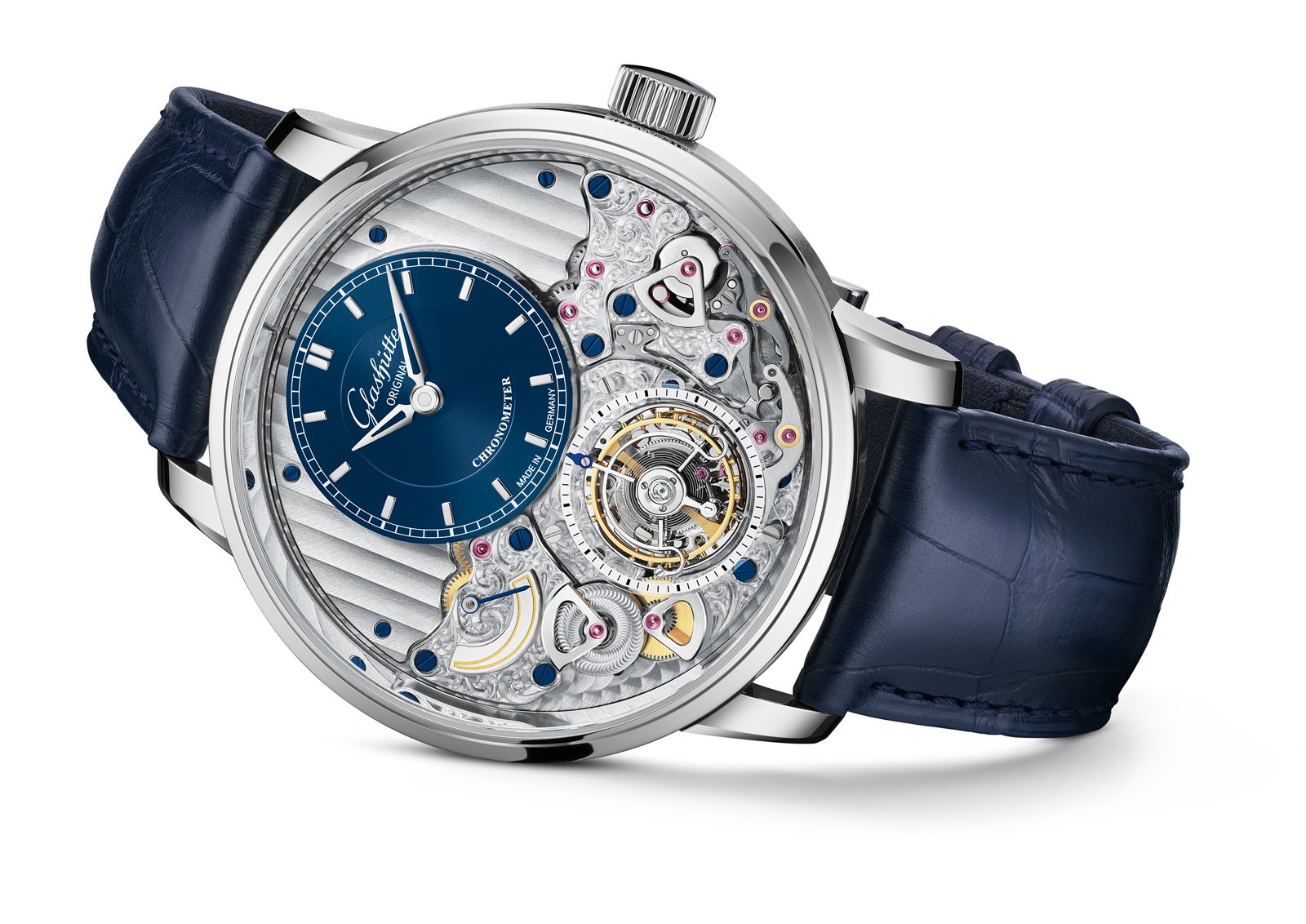
A new PanoInverse
Ten years ago, Glashütte Original released the PanoInverse. Its distinction, as the name suggests, lies in its inversion of the usual construction to let the balance bridge “float freely” over the cutaway plate.
-

- The PanoMaticInverse as published in 2014 in Europa Star.
This new edition, limited to 25, features the famous “butterfly bridge”, very finely hand engraved on a rhodium-plated surface, with lines evoking tendrils of foliage, a motif that is also engraved on the movement, as seen on the back of the watch.
This delicate decorative work is complemented by the highly traditional techniques of polished and screwed gold chatons, red rubies, blued screws, gold engravings and skeletonised hands.
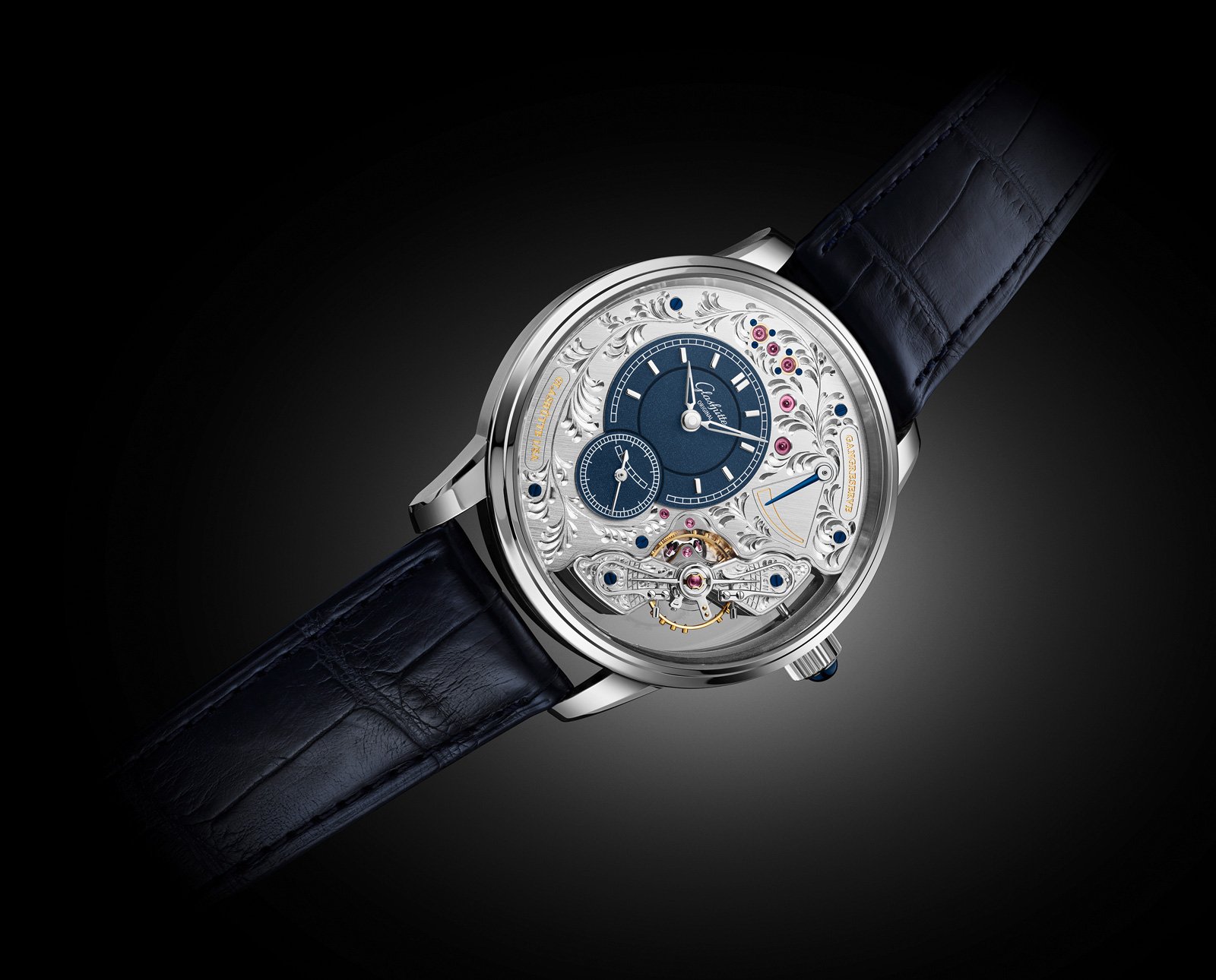
The Senator Chronometer
The flagship watch of the Senator collection, the Senator Chronometer was first introduced in 2009, but with its perfect readability and refined aesthetics, it quickly became a brand classic and a major success.
-

- Two watches from the Senator collection, published in Europa Star 5/2011.
The Senator Chronometer returns in 2019 in a version with a 42 mm red gold case and a refined bezel that leaves more room for the textured and grained silver dial. Chronometer certified by the DKD, the German calibration service, it is adjustable to the nearest second.
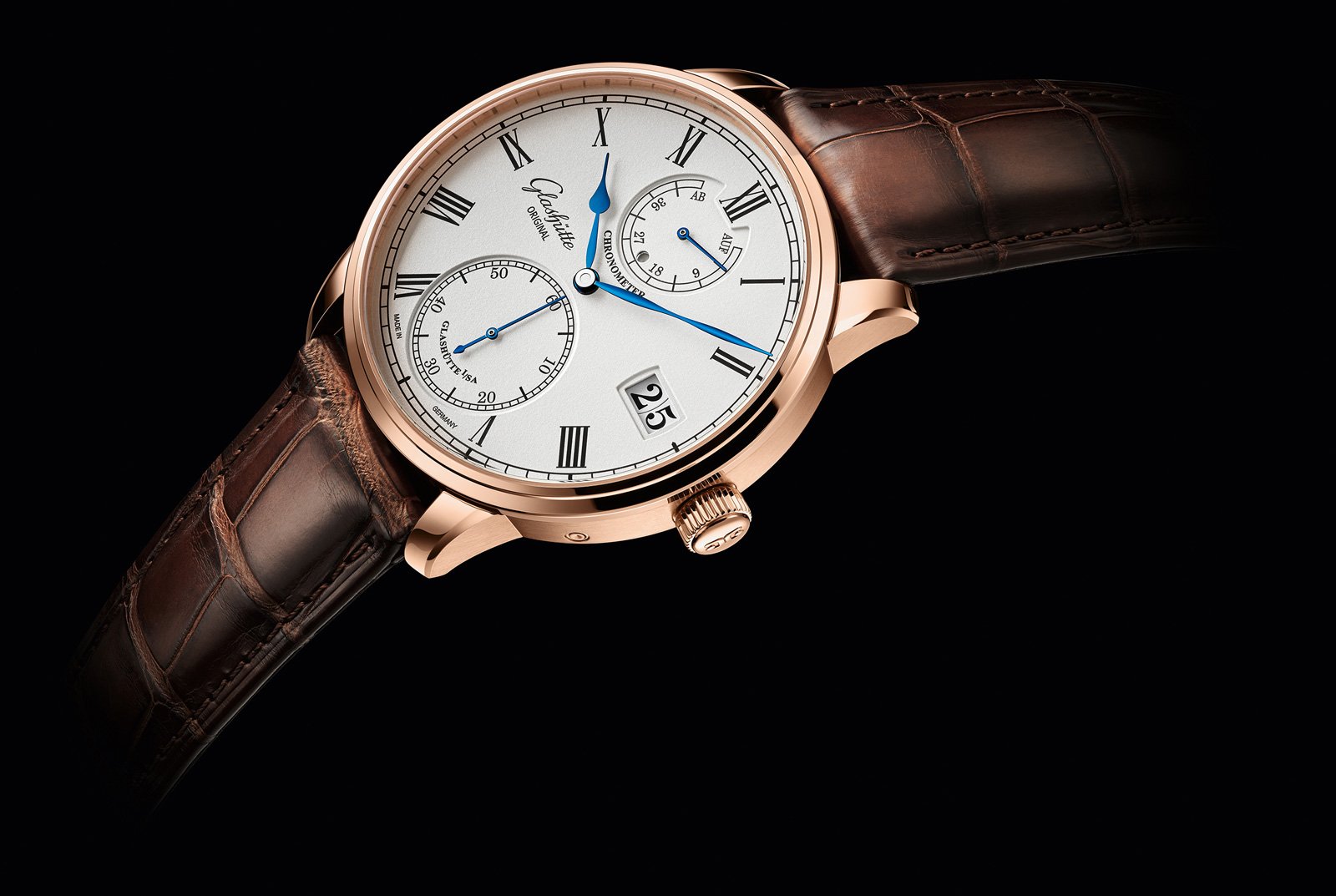
Small seconds at 6 o’clock, power reserve indicator at 12 o’clock, large jumping date at 3 o’clock, day/night indicator: all characteristics that, according to the brand, “are inspired by historical marine chronometers”.
The chronometer is driven by the hand-wound calibre 58-01 (44h 40 min power reserve), with stop-second and reset function which stops the time display, resets the seconds display and locks them in this position by simply pulling the crown. By turning it to set the time, the hand jumps to the next index, thus maintaining the minute and second ratio.
The PanoMaticLunar and the PanoReserve
The Pano range is emblematic of a very “Saxon” approach to watchmaking. As such, it represents one of the brand’s major successes. The layout of its various displays, its characteristic large date and its aesthetic harmony (governed by the golden ratio) have made it one of the most popular watches among collectors.
The Pano range is emblematic of a very “Saxon” approach to watchmaking. As such, it represents one of the brand’s major successes.
-

- The Panomatic Lunar as it appeared in Europa Star 4/2015.
The two new models presented in 2019, with red gold cases and saturated blue dials (which are made in-house), gracefully continue this tradition. Take, for example, the two gently convex golden moons, milled and then machined with a diamond cutter, which glide over the silver firmament, in the PanoMaticLunar. Or the slender Gangreserve against a deep blue galvanised background, in the PanoReserve, whose very name is written on the dial to recall the German origin of its product.
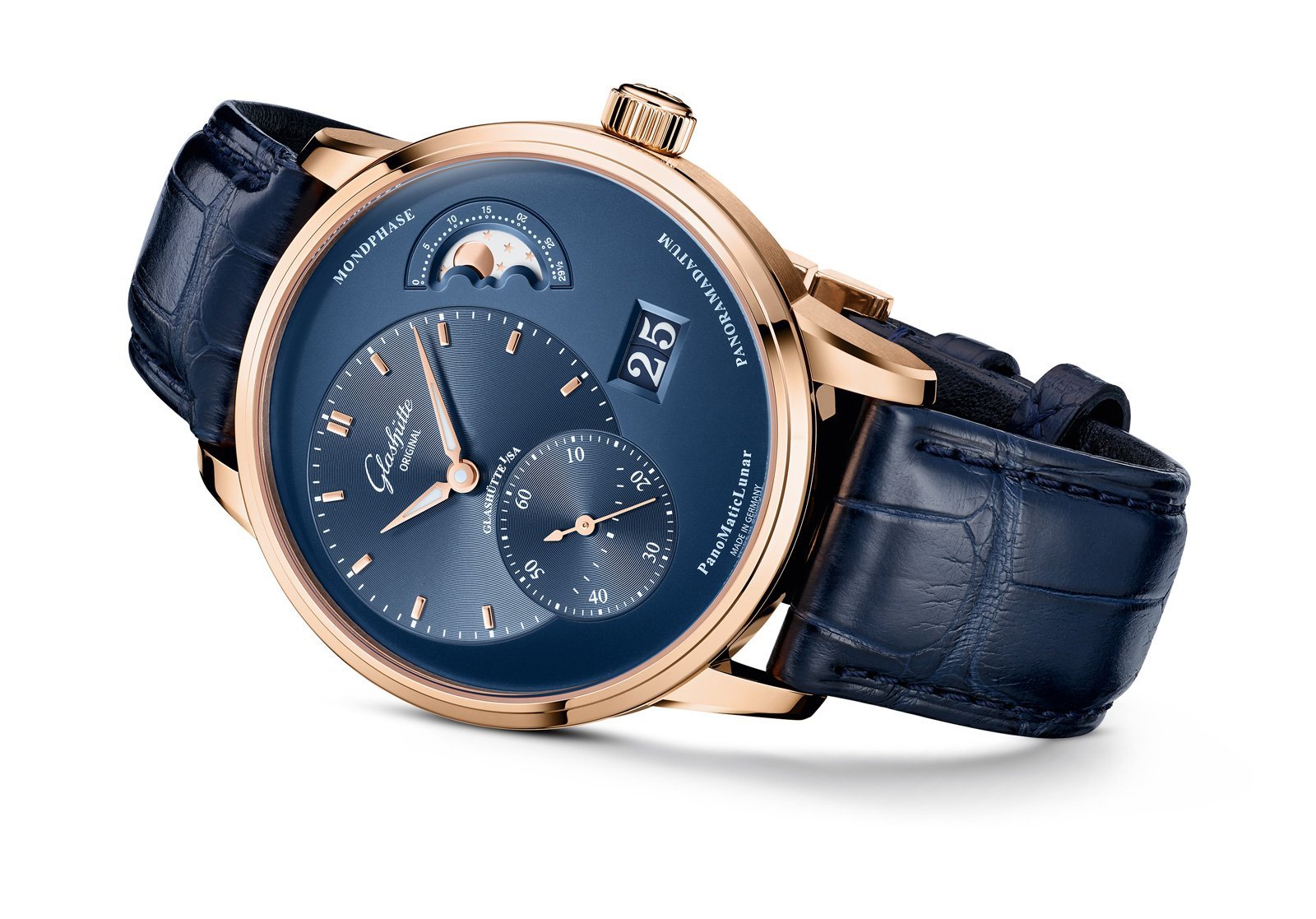
The immaculately finished self-winding calibre 90-02 (4 Hz, 42-hour power reserve) equips the PanomaticLunar.
As for the PanoReserve, it is driven by the hand-wound calibre 65-01 (4 Hz, 42-hour power reserve), which offers a precision adjustment with a double swan-neck mechanism, developed in-house.
-

- The calibre 65-01 by Glashütte Original.
Tool watches
Germany’s requirements for precision and scientific excellence are well known, and it is therefore only natural that Saxon watchmaking has contributed to the advancement of knowledge (as shown by the Royal Cabinet of Mathematical and Physical Instruments in Dresden, for example).
Instruments for navigation on land, in the air and under water, chronometers, observation watches, aviation watches, diving watches... All these tool watches have endured in East Germany, where science and progress are key.
-

- A Spezichron Glashütte from the late 1960s.
Watch like the one shown above, or its twin, the Spezimatic Type RP TS 200, on which the new SeaQ 1969 is directly based, testify to the continuity of the tool watch. It is no coincidence that in the revivalist spirit of today’s mechanical watchmaking, Glashütte Original is rummaging through its archive boxes.
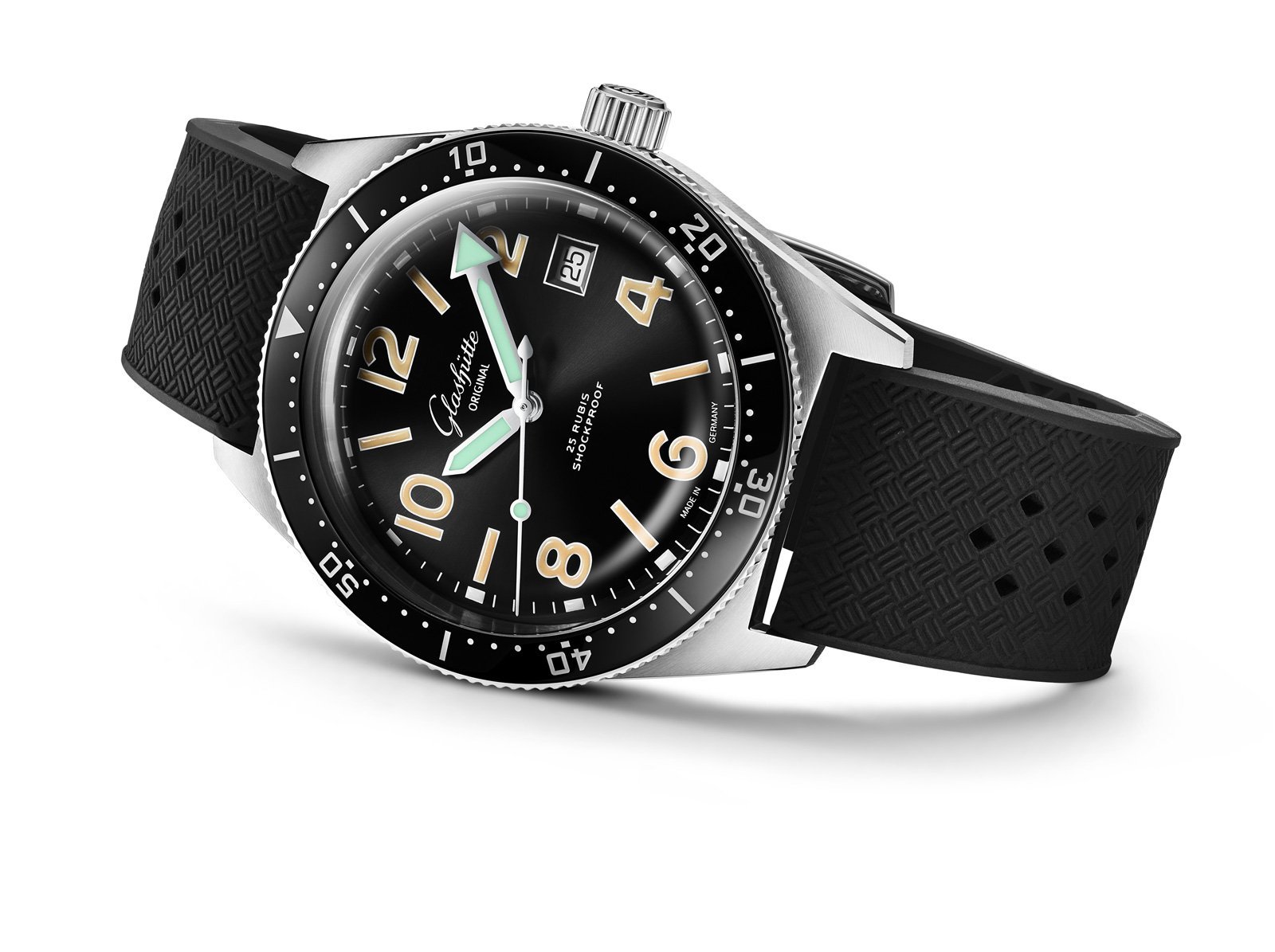
The SeaQ 1969, appropriately limited to 69 pieces, is directly inspired by a 1969 diver’s watch that is utterly emblematic of this period. In its own way, it is part of the “history of modernity”, like so many other models that are resurfacing.
The 1969 SeaQ is part of a new collection by Glashütte Original, the Spezialist, which is aimed at “active, practical, intrepid people”, as the brand emphasises.
This new sports collection offers two models of diving watches, the SeaQ and the SeaQ Panorama Date. Both are inspired by the diver’s watches of the same era, but revisit them with small softening touches and discreet colour effects, mounting them on steel, leather or fabric.
SeaQ Panorama Date


The SeaQ Panorama Date is waterproof to 30 bar, a professional standard. It incorporates a screw-down crown, a centrally attached sapphire crystal back, and is DIN or ISO tested for water resistance, readability, impact and salinity resistance.
Also on the menu: a clockwise rotating notched bezel, clear detent minute, and SuperLumiNova-coated triangular reference mark, hour and minute markers, and hour, minute and second hands.
The SeaQ Panorama Date is equipped with the automatic calibre 36-13, which offers a remarkable 100-hour power reserve and a large date at 4 o’clock, all in a 43.2 mm stainless steel case.
SeaQ Date



The SeaQ Date, water-resistant to 20 bar, offers the same technical specifications as the first model. But it is equipped with the automatic calibre 39-11, is housed in a 39.5 mm steel case and offers a 40-hour power reserve, a stop-second function and a date display at 3 o’clock.
Back to the Sixties
To discover Glashütte Original’s ultimate collection, the Sixties, check out our print editions Europa Star 3/2019 and Europa Star Première 3/2019 by clicking here!



